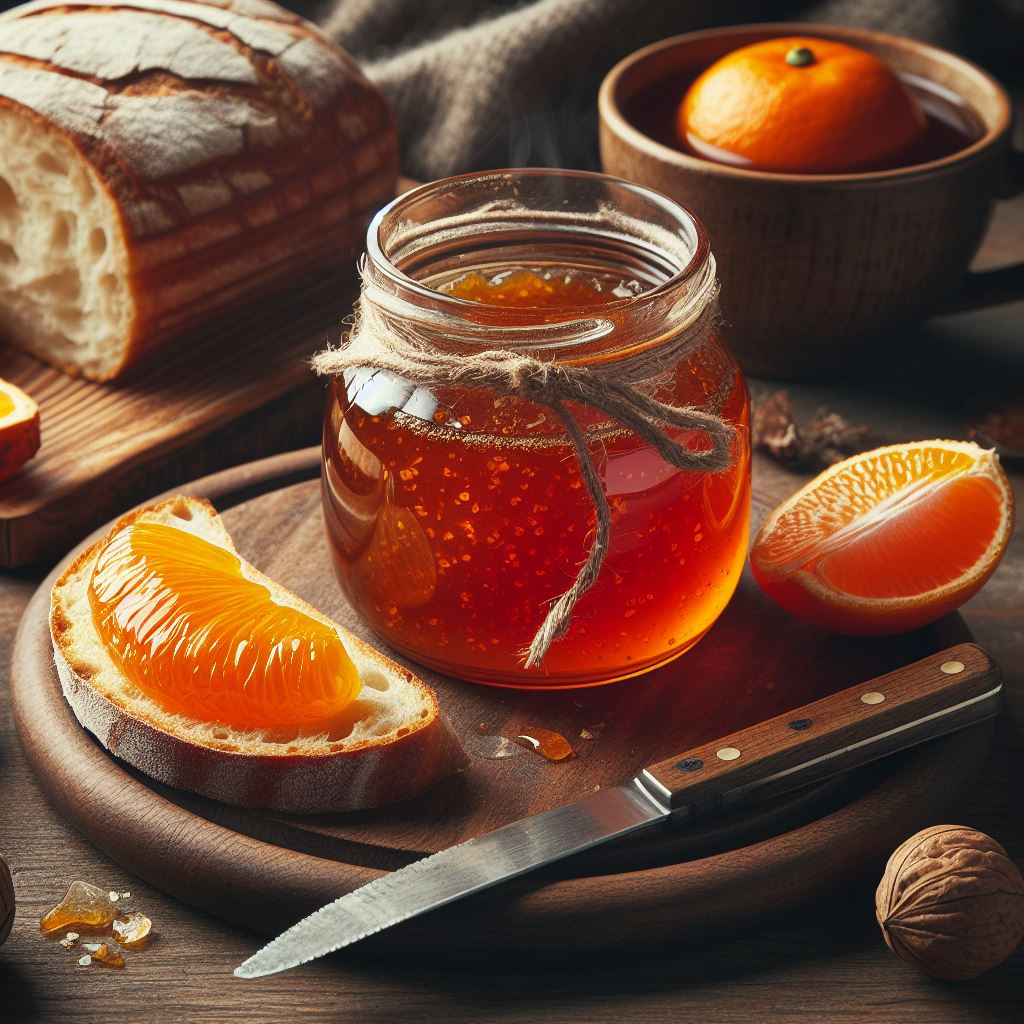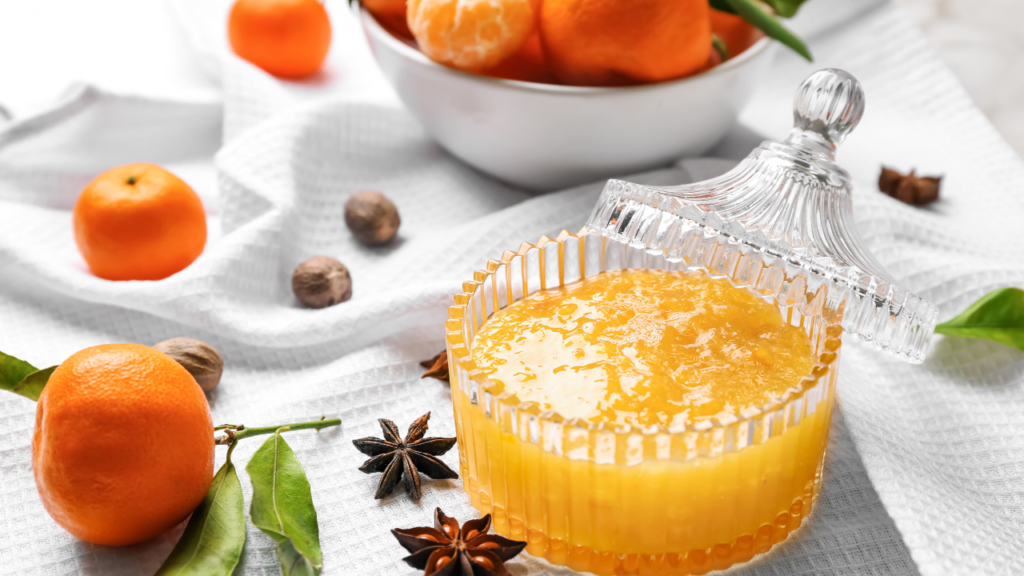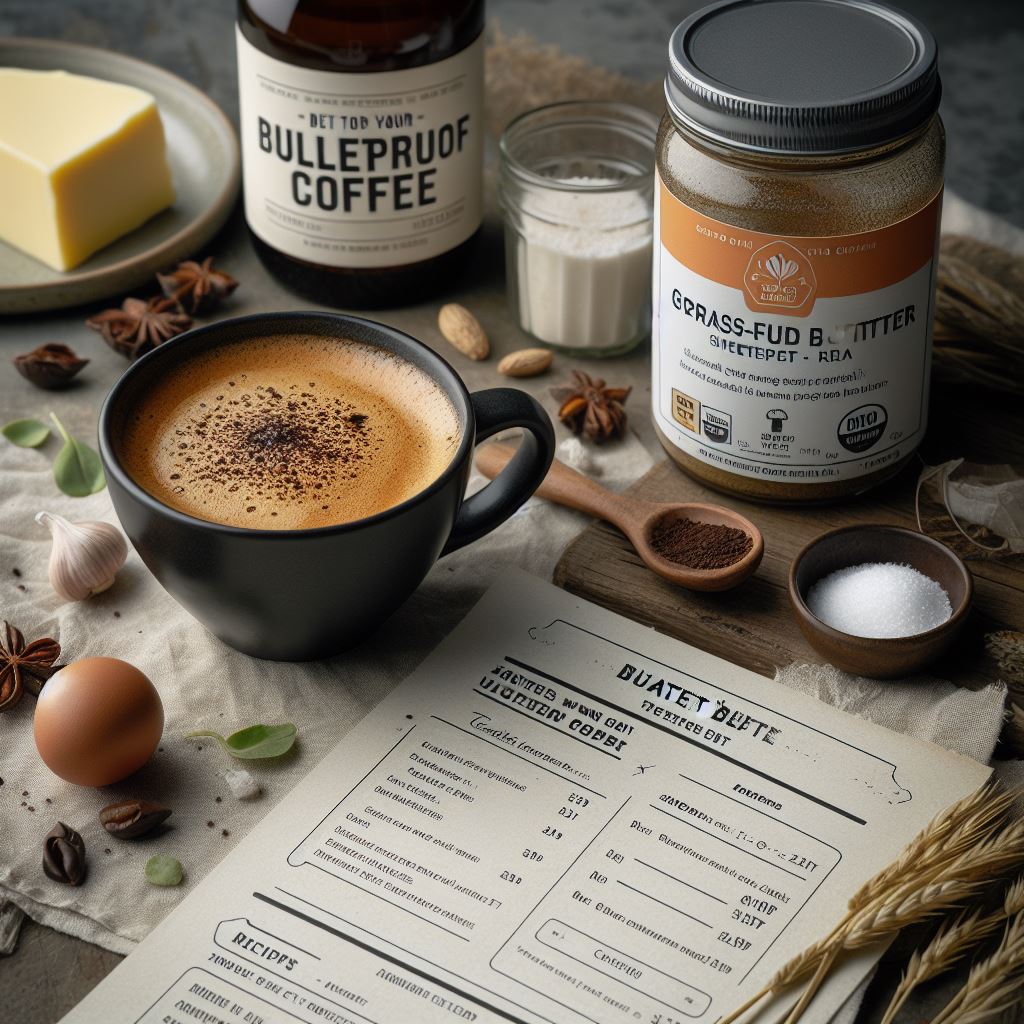Clementine jam is a delicious and easy way to preserve the sweet and tangy flavor of clementines, a type of citrus fruit that is similar to mandarins and oranges. Clementine jam can be enjoyed on toast, scones, yogurt, or as a filling for cakes and pastries. Plus, clementine jam is rich in vitamin C, antioxidants, and fiber, which can benefit your health and immune system.
Clementine jam is a type of citrus jam that can last for a long time if stored properly. According to the web search results12, most jams will last for 6-12 months past a “best by” date, but there are other factors to consider, such as the amount of sugar, pectin, and acid in the jam, the storage method, and the signs of spoilage. Clementine jam is high in sugar, pectin, and acid, which can help preserve it and prevent mold and bacteria growth. However, clementine jam can also lose its flavor and color over time, and develop a liquid layer on the top, which can indicate the beginning of spoilage. To extend the shelf life of clementine jam, it is recommended to store it in a cool, dry, and dark place, such as a pantry or a basement, and to refrigerate it after opening. It is also important to use clean and sterilized jars and utensils and to seal the jars properly. If the jam smells, tastes, or looks bad, it should be discarded.
In this blog post, we will show you 6 easy ways or methods for making clementine jam, using simple ingredients and equipment. You can choose the method that suits your preference and the availability of time and resources. Whether you like your jam smooth or chunky, light or dark, plain or spiced, we have a method for you!

Also Read:
Method 1: Puree and Boil
This is the simplest and fastest method for making clementine jam. You just need to peel and seed the clementines, puree them in a blender or food processor, and boil them with sugar and lemon juice until thickened. This method produces a smooth and glossy jam that has a bright and fresh flavor.
Ingredients:
- 3 pounds of clementines
- 1 cup of sugar
- 2 lemons, juiced
Instructions:
- Peel and seed the clementines, and cut them into quarters.
- Transfer them to a blender or food processor, and puree until smooth.
- Pour the puree into a large saucepan, and add the sugar and lemon juice. Stir well to combine.
- Bring the mixture to a boil over high heat, then reduce the heat and simmer, stirring occasionally, until the jam reaches 220°F (105°C) on a candy thermometer, or until it passes the wrinkle test. This may take about 30 to 40 minutes, depending on the amount of liquid and pectin in the fruit.
- Place a small plate in the freezer for 10 minutes to do the wrinkle test, then drop a teaspoon of jam on it. Return the plate to the freezer for 2 minutes, then push the jam with your finger. If it wrinkles, it is ready. If not, continue cooking and testing until it does.
- Ladle the hot jam into sterilized jars, leaving 1/4 inch of headspace. Wipe the rims and seal the jars with lids and bands. Process the jars in a boiling water bath canner for 10 minutes, or according to your altitude and local guidelines. Alternatively, you can skip the processing and store the jam in the refrigerator for up to 3 weeks, or in the freezer for up to 6 months.
- Enjoy your clementine jam on toast, scones, yogurt, or as a filling for cakes and pastries.

Method 2: Chop and Simmer
This method is similar to the first one, but instead of pureing the clementines, you chop them into small pieces. This gives the jam a chunky and rustic texture that is more like a marmalade. You can also add some spices, such as cinnamon, cloves, or ginger, to enhance the flavor.
Ingredients:
- 3 pounds of clementines
- 1 cup of sugar
- 2 lemons, juiced
- 1/4 teaspoon of salt
- Optional: 1/4 teaspoon of ground cinnamon, cloves, or ginger, or a combination of them
Instructions:
- Peel and seed the clementines, and chop them into small pieces. You can use a knife, a food processor, or a food chopper for this step.
- Transfer the chopped clementines to a large saucepan, and add the sugar, lemon juice, salt, and spices if using. Stir well to combine.
- Bring the mixture to a boil over high heat, then reduce the heat and simmer, stirring occasionally, until the jam reaches 220°F (105°C) on a candy thermometer, or until it passes the wrinkle test. This may take about 45 to 60 minutes, depending on the amount of liquid and pectin in the fruit.
- Place a small plate in the freezer for 10 minutes to do the wrinkle test, then drop a teaspoon of jam on it. Return the plate to the freezer for 2 minutes, then push the jam with your finger. If it wrinkles, it is ready. If not, continue cooking and testing until it does.
- Ladle the hot jam into sterilized jars, leaving 1/4 inch of headspace. Wipe the rims and seal the jars with lids and bands. Process the jars in a boiling water bath canner for 10 minutes, or according to your altitude and local guidelines. Alternatively, you can skip the processing and store the jam in the refrigerator for up to 3 weeks, or in the freezer for up to 6 months.
- Enjoy your clementine jam on toast, scones, yogurt, or as a filling for cakes and pastries.
Method 3: Roast and Blend
This method is a great way to intensify the flavor and color of the clementines, and give the jam a deeper and more complex taste. You need to roast the whole clementines in the oven until they are soft and charred. You then blend them with some sugar and lemon juice and cook until thickened. You can also add some cardamom or rose water to the jam for a more exotic flavor.
Ingredients:
- 3 pounds of clementines
- 1 cup of sugar
- 2 lemons, juiced
- Optional: 1/4 teaspoon of ground cardamom or rose water
Instructions:
- Preheat the oven to 375°F (190°C) and line a baking sheet with parchment paper.
- Wash and dry the clementines, and pierce them several times with a fork. Place them on the prepared baking sheet, and roast for 45 to 60 minutes, or until they are soft and charred.
- Let the clementines cool slightly, then cut them into quarters and remove any seeds.
- Transfer the roasted clementines to a blender or food processor, and add the sugar and lemon juice. Blend until smooth, and add the cardamom or rose water if using.
- Pour the puree into a large saucepan, and bring to a boil over high heat, then reduce the heat and simmer, stirring occasionally, until the jam reaches 220°F (105°C) on a candy thermometer, or until it passes the wrinkle test. This may take about 30 to 40 minutes, depending on the amount of liquid and pectin in the fruit.
- Place a small plate in the freezer for 10 minutes to do the wrinkle test, then drop a teaspoon of jam on it. Return the plate to the freezer for 2 minutes, then push the jam with your finger. If it wrinkles, it is ready. If not, continue cooking and testing until it does.
- Ladle the hot jam into sterilized jars, leaving 1/4 inch of headspace. Wipe the rims and seal the jars with lids and bands. Process the jars in a boiling water bath canner for 10 minutes, or according to your altitude and local guidelines. Alternatively, you can skip the processing and store the jam in the refrigerator for up to 3 weeks, or in the freezer for up to 6 months.
- Enjoy your clementine jam on toast, scones, yogurt, or as a filling for cakes and pastries.
Method 4: Pressure Cook and Mash
This method is a quick and easy way to make clementine jam without any peeling or chopping. You need to pressure cook the whole clementines until they are soft and burst open. You then mash them with a potato masher or a fork and cook them with sugar and lemon juice until thickened. This method produces a jam that has a coarse and pulpy texture that is similar to a conserve.
Ingredients:
- 3 pounds of clementines
- 1 cup of water
- 1 cup of sugar
- 2 lemons, juiced
Instructions:
- Wash and dry the clementines, and pierce them several times with a fork.
- Place them in a pressure cooker, and add the water. Lock the lid and bring to high pressure over high heat, then reduce the heat and cook for 15 minutes, or until the clementines are soft and burst open.
- Release the pressure naturally, and carefully open the lid. Drain the clementines and transfer them to a large saucepan. Mash them with a potato masher or a fork, and discard any seeds or hard bits.
- Add the sugar and lemon juice to the mashed clementines, and stir well to combine.
- Bring the mixture to a boil over high heat, then reduce the heat and simmer, stirring occasionally, until the jam reaches 220°F (105°C) on a candy thermometer, or until it passes the wrinkle test. This may take about 30 to 40 minutes, depending on the amount of liquid and pectin in the fruit.
- Place a small plate in the freezer for 10 minutes to do the wrinkle test, then drop a teaspoon of jam on it. Return the plate to the freezer for 2 minutes, then push the jam with your finger. If it wrinkles, it is ready. If not, continue cooking and testing until it does.
- Ladle the hot jam into sterilized jars, leaving 1/4 inch of headspace. Wipe the rims and seal the jars with lids and bands. Process the jars in a boiling water bath canner for 10 minutes, or according to your altitude and local guidelines. Alternatively, you can skip the processing and store the jam in the refrigerator for up to 3 weeks, or in the freezer for up to 6 months.
- Enjoy your clementine jam on toast, scones, yogurt, or as a filling for cakes and pastries.
Method 5: Slow Cook and Strain
This method is a good way to make clementine jam without any added pectin or sugar. You need to slow-cook the whole clementines with some water until they are soft and mushy. You then strain the mixture through a cheesecloth or a fine sieve, and cook the resulting juice until thickened. This method produces a jam that has a clear and jelly-like texture that is similar to a jelly.
Ingredients:
- 3 pounds of clementines
- 4 cups of water
Instructions:
- Wash and dry the clementines, and cut them into quarters. Remove any seeds or hard bits.
- Please place them in a slow cooker, and add the water. Cover and cook on low for 8 to 10 hours, or until the clementines are soft and mushy.
- Line a colander with a cheesecloth or a fine sieve, and place it over a large bowl. Pour the clementine mixture into the colander, and let it drain for 2 to 3 hours, or until you have about 4 cups of juice.
Do not press or squeeze the mixture, as this can make the resulting juice cloudy. Transfer the collected juice to a large saucepan and bring it to a boil over medium-high heat. Reduce the heat to low and let it simmer gently, stirring occasionally, until the juice has thickened to your desired consistency, usually about 1 to 2 hours. Once thickened, remove the jam from the heat and let it cool slightly. Transfer it to sterilized jars, leaving a bit of space at the top, and seal them tightly. Allow the jam to cool completely before storing it in the refrigerator for up to several weeks. Enjoy your homemade clementine jam on toast, scones, or as a delightful accompaniment to cheese boards!
Method 6: Microwave and Stir
This method is a convenient and quick way to make clementine jam without any stovetop cooking. You need to microwave the clementines with some sugar and lemon juice until they are soft and juicy. You then stir the mixture with a fork or a whisk and microwave it again until thickened. This method produces a jam that has a smooth and creamy texture that is similar to a curd.
Ingredients:
- 3 pounds of clementines
- 1 cup of sugar
- 2 lemons, juiced
Instructions:
- Peel and seed the clementines, and cut them into quarters.
- Place them in a large microwave-safe bowl, and add the sugar and lemon juice. Stir well to combine.
- Microwave the mixture on high for 10 minutes, or until the clementines are soft and juicy. Stir halfway through the cooking time.
- Mash the clementines with a fork or a whisk, and discard any seeds or hard bits.
- Microwave the mixture on high for another 10 minutes, or until the jam reaches 220°F (105°C) on a candy thermometer, or until it passes the wrinkle test. Stir halfway through the cooking time.
- Place a small plate in the freezer for 10 minutes to do the wrinkle test, then drop a teaspoon of jam on it. Return the plate to the freezer for 2 minutes, then push the jam with your finger. If it wrinkles, it is ready. If not, continue cooking and testing until it does.
- Ladle the hot jam into sterilized jars, leaving 1/4 inch of headspace. Wipe the rims and seal the jars with lids and bands. Process the jars in a boiling water bath canner for 10 minutes, or according to your altitude and local guidelines. Alternatively, you can skip the processing and store the jam in the refrigerator for up to 3 weeks, or in the freezer for up to 6 months.
- Enjoy your clementine jam on toast, scones, yogurt, or as a filling for cakes and pastries.
We hope you enjoyed this blog post on 10 different easy ways or methods for making clementine jam and learned something new and useful. Clementine jam is a wonderful and versatile preserve that can brighten up your breakfast, snack, or dessert. You can also make it as a gift for your friends and family, or as a way to use up your excess clementines. Try these methods and see which one you like best, or experiment with your variations and flavors. Happy jamming! 😊

you can freeze clementine jam. Freezing jam can extend its shelf life and prevent spoilage. However, freezing jam can also affect its flavor and texture over time, so it is best to use it within 6 months. To freeze clementine jam, you can follow these steps:
- Choose a freezer-safe container, such as a plastic jar or a ziplock bag. If you use a glass jar, make sure it is thick and sturdy, and leave some space for the jam to expand when frozen.
- Label the container with the date and the name of the jam. This will help you keep track of how long the jam has been in the freezer, and avoid confusion with other frozen foods.
- Transfer the jam to the container, and seal it well. Try to remove as much air as possible from the container, as air can cause freezer burn and affect the quality of the jam.
- Place the container in the freezer, and store it away from strong-smelling foods, such as garlic or onion, as they can transfer their odor to the jam.
- To thaw the jam, you can move it to the refrigerator overnight, or microwave it on low power for a few minutes, stirring occasionally. Do not refreeze the jam once it is thawed, as this can cause it to lose its flavor and texture. Use the jam within a week after thawing, and refrigerate it when not in use.
Freezing clementine jam is a simple and convenient way to preserve its sweet and tangy flavor, and enjoy it for longer. However, freezing jam is not a substitute for proper canning, and you should always follow the safety guidelines for making and storing jam. If you notice any signs of spoilage, such as mold, discoloration, or bad smell, do not eat the jam and discard it immediately.

make sugar-free clementine jam
Yes, you can make sugar-free clementine jam by using a natural sweetener, such as erythritol, stevia, or monk fruit, instead of sugar. You can also use a low-sugar pectin, such as Pomona’s Universal Pectin, to help the jam set without adding extra sugar. Alternatively, you can use a thickener, such as chia seeds, cornstarch, or applesauce, to give the jam a nice consistency without pectin or sugar. Here is a possible recipe for sugar-free clementine jam using erythritol and chia seeds:
Ingredients:
- 3 pounds of clementines
- 1/4 cup of erythritol
- 2 lemons, juiced
- 3 tablespoons of chia seeds
Instructions:
- Peel and seed the clementines, and cut them into quarters.
- Transfer them to a blender or food processor, and puree until smooth.
- Pour the puree into a large saucepan, and add the erythritol and lemon juice. Stir well to combine.
- Bring the mixture to a boil over high heat, then reduce the heat and simmer, stirring occasionally, until the jam reaches 220°F (105°C) on a candy thermometer, or until it passes the wrinkle test. This may take about 30 to 40 minutes, depending on the amount of liquid and pectin in the fruit.
- To do the wrinkle test, place a small plate in the freezer for 10 minutes, then drop a teaspoon of jam on it. Return the plate to the freezer for 2 minutes, then push the jam with your finger. If it wrinkles, it is ready. If not, continue cooking and testing until it does.
- Stir in the chia seeds, and let the jam cool slightly.
- Ladle the hot jam into sterilized jars, leaving 1/4 inch of headspace. Wipe the rims and seal the jars with lids and bands. Process the jars in a boiling water bath canner for 10 minutes, or according to your altitude and local guidelines. Alternatively, you can skip the processing and store the jam in the refrigerator for up to 3 weeks, or in the freezer for up to 6 months.
- Enjoy your sugar-free clementine jam on toast, scones, yogurt, or as a filling for cakes and pastries.
For more sugar-free jam recipes, you can check out these web search results123.
How do I know if my jam has enough pectin?
Pectin is a natural substance that helps jam to set and form a gel-like texture. Different fruits have different amounts of pectin, and the amount of pectin also depends on the ripeness and season of the fruit. To make sure your jam has enough pectin, you can do a simple test before adding sugar to the fruit juice. Here are the steps for the test12:
- Simmer the fruit in a little water until it is soft and releases its juice.
- Place a teaspoon of the clear boiling juice into a small jar or cup and let it cool for a minute.
- Add three tablespoons of denatured alcohol or methylated spirits to the jar and swirl or shake gently. Let it stand for a minute.
- Look for the size and firmness of the jellied lump that forms in the jar. A large, firm lump indicates a high level of pectin, while several small, soft lumps indicate a medium level of pectin. Many tiny, soft lumps indicate a low level of pectin.
- If the test shows a low or medium level of pectin, you can add some commercial pectin, lemon juice, or tart apples to the fruit juice to increase the pectin content. Alternatively, you can cook the fruit for longer to extract more pectin, or use less sugar to reduce the amount of pectin needed.
You can also test the setting point of the jam after adding sugar by using a candy thermometer, a cold plate, or a spoon. For more information on how to test the setting point of jam, you can check out these web search results3








